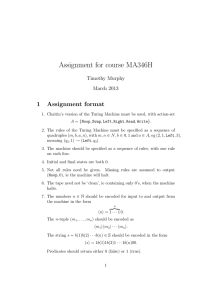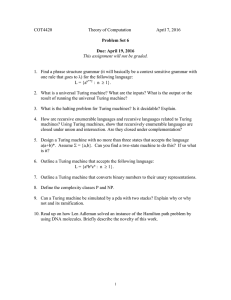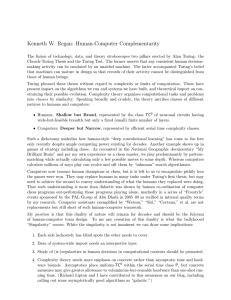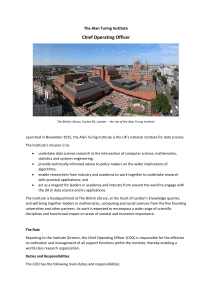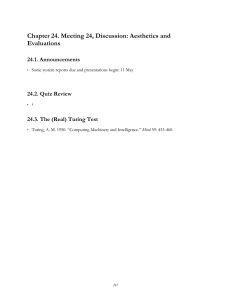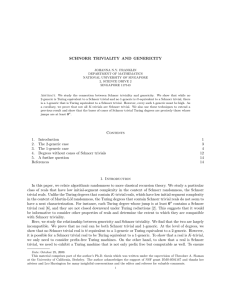– Paradox and Infinity 24.118 Set 8: Computability Problem
advertisement
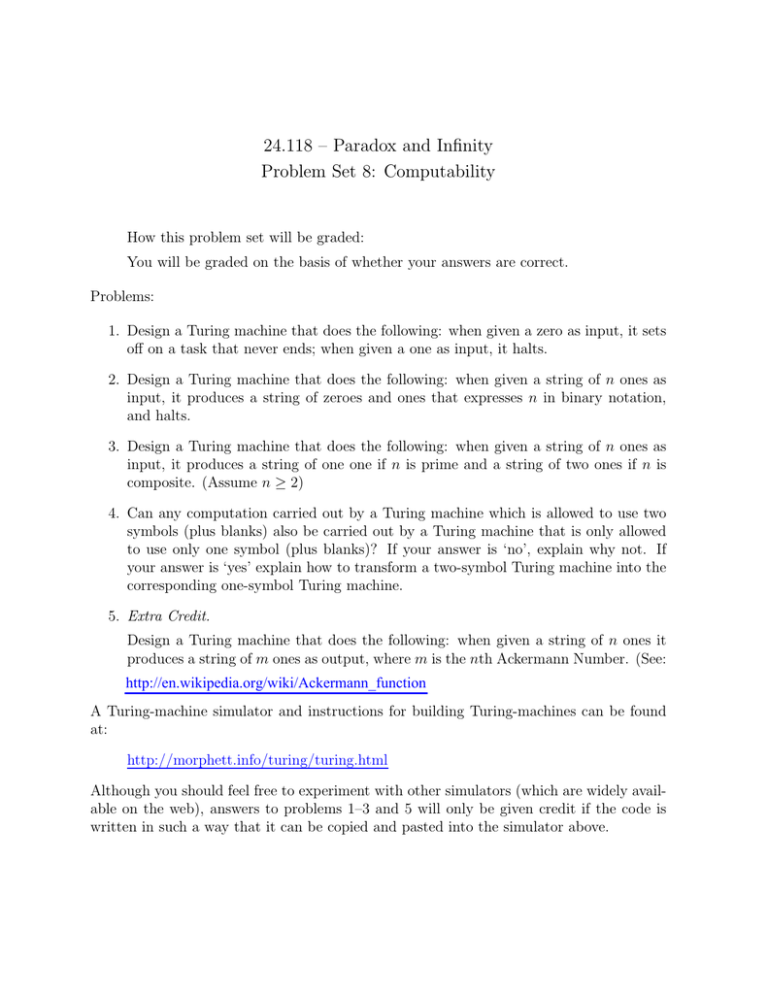
24.118 – Paradox and Infinity Problem Set 8: Computability How this problem set will be graded: You will be graded on the basis of whether your answers are correct. Problems: 1. Design a Turing machine that does the following: when given a zero as input, it sets off on a task that never ends; when given a one as input, it halts. 2. Design a Turing machine that does the following: when given a string of n ones as input, it produces a string of zeroes and ones that expresses n in binary notation, and halts. 3. Design a Turing machine that does the following: when given a string of n ones as input, it produces a string of one one if n is prime and a string of two ones if n is composite. (Assume n ≥ 2) 4. Can any computation carried out by a Turing machine which is allowed to use two symbols (plus blanks) also be carried out by a Turing machine that is only allowed to use only one symbol (plus blanks)? If your answer is ‘no’, explain why not. If your answer is ‘yes’ explain how to transform a two-symbol Turing machine into the corresponding one-symbol Turing machine. 5. Extra Credit. Design a Turing machine that does the following: when given a string of n ones it produces a string of m ones as output, where m is the nth Ackermann Number. (See: http://en.wikipedia.org/wiki/Ackermann_function A Turing-machine simulator and instructions for building Turing-machines can be found at: http://morphett.info/turing/turing.html Although you should feel free to experiment with other simulators (which are widely avail­ able on the web), answers to problems 1–3 and 5 will only be given credit if the code is written in such a way that it can be copied and pasted into the simulator above. MIT OpenCourseWare http://ocw.mit.edu 24.118 Paradox & Infinity Spring 2013 For information about citing these materials or our Terms of Use, visit: http://ocw.mit.edu/terms.


